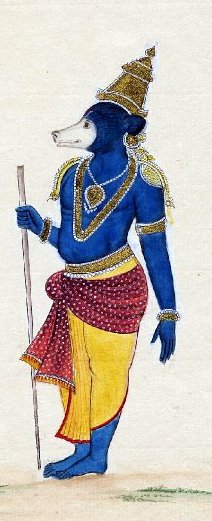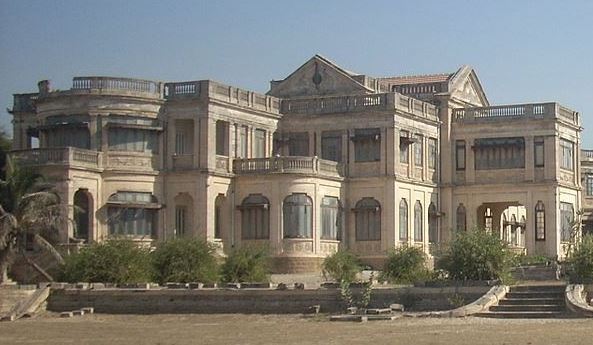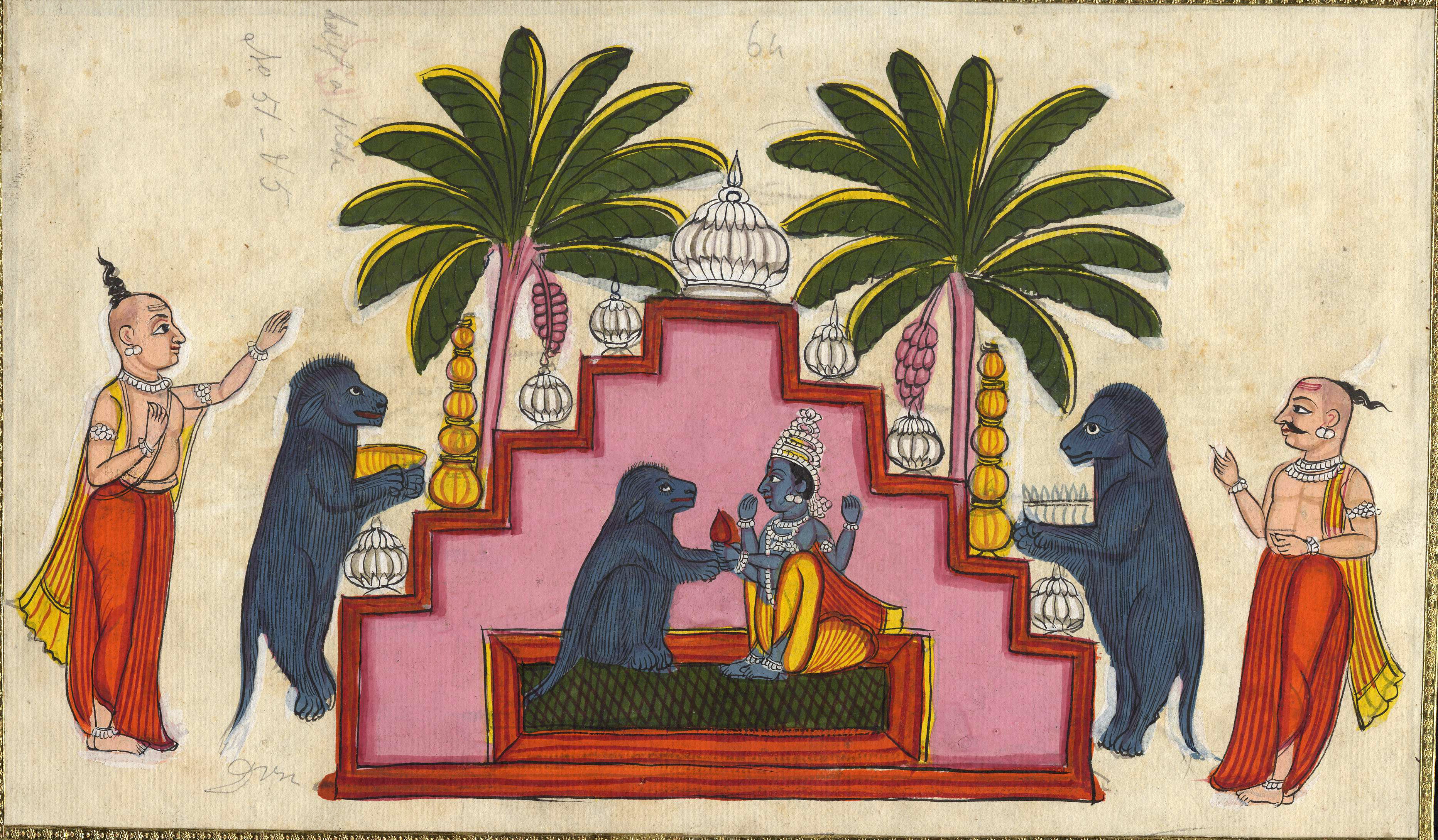|
Avani
Avani is a small village in Mulabaagilu taluk, Kolara district in Karnataka, India, about ten miles from Kolar Gold Fields. The village is located at 32 km from Kolara, the district centre and 13 km from Mulabaagilu, the Taluk headquarters. It is a popular location for rock climbing. Legend Avani is known for the Sita temple situated on a hill. This temple is one of the few temples dedicated to Sitadevi in India. There is a belief that the sage Valmiki, the author of the epic Ramayana, was residing here during the period of Ramayana. Sitadevi lived here in his ashram while in exile. Sitadevi gave birth to her twin children Lava-Kusha here. Even today the room where Sita gave birth to her children exists. The war between Sri Rama and his sons Lava and Kusha happened in this village. The Temple is also visited by lot of childless couple, it is believed that , the childless women has to take bath in the lakshmana thirtha, then in the wet clothes she has go to the templ ... [...More Info...] [...Related Items...] OR: [Wikipedia] [Google] [Baidu] |
Ramalingeshwara Group Of Temples, Avani
The Ramalingeshwara group of temples (also spelt ''Ramalingeshvara'' or ''Ramalingesvara'' and sometimes referred to as ''Rameshvara'' group), situated in Avani, Kolar, Avani town of the Kolar district, Karnataka state, India, is constructed in the ''Dravidian architecture, dravida style''. According to the Archaeological Survey of India (ASI), the temple is an ornate 10th-century Nolamba dynasty construction which was partially renovated later by the Chola dynasty.The Vijayanagara kings was built Main Mandapam and Rajagopuram. The temple is protected by the Archaeological Survey of India as a monument of national importance. History Avani is a place of great antiquity. According to the ASI, an inscription here dated 399 A.D. refers to it. Later inscriptions call it the "Bodhgaya, Gaya of the south". Legend has it that Avani was the abode of the Hindu saint Valmiki (author of the epic Ramayana) and that the Hindu god Rama visited Avani during his return to Ayodhya from Lanka. Acc ... [...More Info...] [...Related Items...] OR: [Wikipedia] [Google] [Baidu] |
Kolara
Kolar or Kolara is a city in the Indian state of Karnataka. It is the headquarters of Kolar district. The city is known for its milk production and gold mines. It is also known for Someshwara temple and Kolaramma temple. History The Western Gangas sovereignty lasted from about 350 to 550 CE, initially ruled from Kolar as their Capital City. The founder of the Western Ganga dynasty was Konganivarman Madhava, who built Kolar as his capital around 350 and ruled for about twenty years. He was succeeded by his son Madhava I. Kolar, the headquarters of the Kolar district, was earlier known as Kuvalalapura, also known as Kolahala Pura. Historically, Kolar is said to be associated with the epic age, which recalls many legends associated with Avani in Mulbagal Taluk, which was also called Avani Kshetra. It was once known as Avantika - Kshetra, a sacred place in Kolar district in Karnataka State. It was famous for its religious establishments from ancient times. It was once known a ... [...More Info...] [...Related Items...] OR: [Wikipedia] [Google] [Baidu] |
Mulbagal
Mulabagilu is a town and taluk headquarters of Mulabagilu taluk in the Kolar district in the state of Karnataka, India. It lies just off the National Highway 75 as the easternmost town of the state and a hill landmark. Etymology "Mulabagilu" (ಮುಳಬಾಗಿಲು) comes from the word ''mudalabagilu,'' which means the "eastern door" in the native Kannada language. Mulabagilu was supposedly the easternmost frontier of (and thereby the entrance to) the state of Mysuru. History One legend describes how the Hanuman temple here was installed by Arjuna, one of the Pandavas, after the Mahabharata war. Sage Vasishta is believed to have installed the idols of the main deity Srinivasa, Padmavati and Rama-Sita-Lakshmana. The history of Mulabagilu was compiled by Benjamin Lewis Rice, in his book "The Gazetteer of Mysore" (1887). In modern history, Mulabagilu is mentioned as the site of the Battle of Mulabagilu on 4 October 1768, during the First Anglo-Mysore War. Geography Mulaba ... [...More Info...] [...Related Items...] OR: [Wikipedia] [Google] [Baidu] |
Kolar Gold Fields
Kolar Gold Fields (K.G.F.) is a mining region in K.G.F. taluk (township), Kolar district, Karnataka, India. It is headquartered in Robertsonpet, where employees of Bharat Gold Mines Limited (BGML) and BEML Limited (formerly Bharat Earth Movers Limited) and their families live. K.G.F. is about from Kolar, from Bengaluru, capital of Karnataka. Over a century, the town has been known for gold mining. The mine closed on 28 February 2001 due to a fall in gold prices, despite gold still being present there. One of India's first power-generation units was built in 1889 to support mining operations. The mine complex hosted some particle physics experiments between the 1960s and 1992. History The history of the Kolar Gold Fields was compiled by Fred Goodwill, superintendent of the Police, Maldives and Kolar Gold Fields. Goodwill's studies were published in the ''Quarterly Journal of the Mythic Society'' and elsewhere. The Jain Western Gangas Dynasty founded Kolar in the second ... [...More Info...] [...Related Items...] OR: [Wikipedia] [Google] [Baidu] |
Nolamba Dynasty
The Nolamba dynasty the area they held sway over is referred to as ''Nolambasa-37'' of Henjeru (Hemavathi), ''Nolambalige'' (''Nolambavadi''-32000), etc. R. Narasimhacharya states that the Nolambas were a native Kannada dynasty. Officers and kings belonging to the Nolamba dynasty *Simhapota, a Nolamba chief, subordinate to the Ganga kings. *Mahendra I, Ayyapadeva who probably ruled around the period of Krishna II of the Rastrakutas. *Anniga or Annayya with the title Bira-Nolamba ruled in the period of Amoghavarsha of Rastrakutas. *Dilipa or Iriva Nolamba around the period of Krishna III of the Rashtrakutas. According to an inscription from Aimangala, 56 Dilipa's son and successor was Nanni Nolamba. *There are two other names after Nanni Nolamba, namely Polalchora II and Vira Mahendra or Mahendra II as per Kolar district inscriptions. As long as the Rastrakutas were strong Nolamba flourished under their influence. But after their collapse Nolamba Dynasty lost its influence and po ... [...More Info...] [...Related Items...] OR: [Wikipedia] [Google] [Baidu] |
Gujarat
Gujarat (, ) is a state along the western coast of India. Its coastline of about is the longest in the country, most of which lies on the Kathiawar peninsula. Gujarat is the fifth-largest Indian state by area, covering some ; and the ninth-most populous state, with a population of 60.4 million. It is bordered by Rajasthan to the northeast, Dadra and Nagar Haveli and Daman and Diu to the south, Maharashtra to the southeast, Madhya Pradesh to the east, and the Arabian Sea and the Pakistani province of Sindh to the west. Gujarat's capital city is Gandhinagar, while its largest city is Ahmedabad. The Gujaratis are indigenous to the state and their language, Gujarati, is the state's official language. The state encompasses 23 sites of the ancient Indus Valley civilisation (more than any other state). The most important sites are Lothal (the world's first dry dock), Dholavira (the fifth largest site), and Gola Dhoro (where 5 uncommon seals were found). Lothal i ... [...More Info...] [...Related Items...] OR: [Wikipedia] [Google] [Baidu] |
Jambavan
Jambavan (Devanagari: जाम्बवान्), also known as Jambavanta (Devanagari: जाम्बवत्), is the king of the bears in Hindu texts. He emerges out of the mouth of Brahma when the creator deity yawns. He assists the Rama avatar of Vishnu in his struggle against the rakshasa king Ravana. In the Ramayana, he helps Hanuman realise his potential, just before his famous leap over to the island of Lanka.Patricia Turner, Charles Russell Coulter. ''Dictionary of ancient deities''. 2001, page 248 Jambavan was present at the Churning of the Ocean, and is supposed to have circled Vamana 21 times in a single leap, when he was acquiring the three worlds from Mahabali. Jambavan, together with Parashurama and Hanuman, is considered to be one of the few to have been present for both the Rama and the Krishna avataras. His daughter Jambavati was married to Krishna. Nomenclature Jambavan is also known as: * Jambavantan * Jambavanta (জাম্বৱন্ত, Assam ... [...More Info...] [...Related Items...] OR: [Wikipedia] [Google] [Baidu] |
Madhya Pradesh
Madhya Pradesh (, ; meaning 'central province') is a state in central India. Its capital is Bhopal, and the largest city is Indore, with Jabalpur, Ujjain, Gwalior, Sagar, and Rewa being the other major cities. Madhya Pradesh is the second largest Indian state by area and the fifth largest state by population with over 72 million residents. It borders the states of Uttar Pradesh to the northeast, Chhattisgarh to the east, Maharashtra to the south, Gujarat to the west, and Rajasthan to the northwest. The area covered by the present-day Madhya Pradesh includes the area of the ancient Avanti Mahajanapada, whose capital Ujjain (also known as Avantika) arose as a major city during the second wave of Indian urbanisation in the sixth century BCE. Subsequently, the region was ruled by the major dynasties of India. The Maratha Empire dominated the majority of the 18th century. After the Anglo-Maratha Wars in the 19th century, the region was divided into several princel ... [...More Info...] [...Related Items...] OR: [Wikipedia] [Google] [Baidu] |
Porbandar
Porbandar is a city in the States and territories of India, Indian state of Gujarat, perhaps best known for being the birthplace of Mahatma Gandhi and Sudama. It is the administrative center of the Porbandar District and it was the former capital of the Porbandar State, Porbandar princely state. As the birthplace of one of the most famous leaders of the world, Porbandar has a significant tourism-led infrastructure and economy. The area around Mahatma Gandhi's home has been renovated to make a temple of peace. Porbandar's beach locally known as 'Chowpati' has a long, sandy expanse along the ocean. Construction activities to provide attractions and manage litter and facilities on Chowpati Beach started in around 2003. It has been furnished with well-arranged seating for tourists and commuters; there is a skating rink for children. The Chowpati ground has been used for the 'Janamastmi Fair', an annual festival. This place is well equipped with a circuit house and a range of hotels ... [...More Info...] [...Related Items...] OR: [Wikipedia] [Google] [Baidu] |
Jambavati
Jambavati () is chronologically the second ''Ashtabharya'' of the Hindu god Krishna. She is the only daughter of the bear-king Jambavan. Krishna marries her when he defeats her father, Jambavan, in his quest to retrieve the stolen Syamantaka jewel. Nomenclature Jambavati, a patronymic, means daughter of Jambavan. Sridhara, a commentator on the ''Bhagavata Purana'', identifies her with Krishna's wife Rohini. However, another commentator Ratnagarbha disagrees. The ''Harivamsa'' also suggests that Rohini may be an alternate name of Jambavati. Jambavati is also given the epithets Narendraputri and Kapindraputra. Legend In the epic ''Mahabharata'', Jambavan is introduced as Jambavati's father. The ''Bhagavata Purana'' and the ''Harivamsa'' calls him the king of bears. Jambavati is an incarnation of the goddess Lakshmi, along with the junior wives of Krishna, as well as the Ashtabharya. Marriage to Krishna The marriage of Jambavati and Satyabhama to Krishna is closely linked w ... [...More Info...] [...Related Items...] OR: [Wikipedia] [Google] [Baidu] |
South
South is one of the cardinal directions or Points of the compass, compass points. The direction is the opposite of north and is perpendicular to both east and west. Etymology The word ''south'' comes from Old English ''sūþ'', from earlier Proto-Germanic language, Proto-Germanic ''*sunþaz'' ("south"), possibly related to the same Proto-Indo-European language, Proto-Indo-European root that the word ''sun'' derived from. Some languages describe south in the same way, from the fact that it is the direction of the sun at noon (in the Northern Hemisphere), like Latin meridies 'noon, south' (from medius 'middle' + dies 'day', cf English meridional), while others describe south as the right-hand side of the rising sun, like Biblical Hebrew תֵּימָן teiman 'south' from יָמִין yamin 'right', Aramaic תַּימנַא taymna from יָמִין yamin 'right' and Syriac ܬܰܝܡܢܳܐ taymna from ܝܰܡܝܺܢܳܐ yamina (hence the name of Yemen, the land to the south/right of the ... [...More Info...] [...Related Items...] OR: [Wikipedia] [Google] [Baidu] |



_male.jpg)

